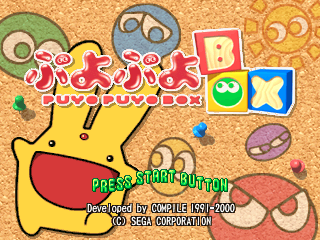



















 Kikimora |
 Kodomo Dragon |
 Honey Bee |
 Lagnus Bishasi |
 Choppun |
 Archan |
 Archan (Alt) |
 Chico |
 Doppelganger Arle |
 Arle Nadja |
 Draco |
 Seriri |
 Witch |
 Kikimora |
 Panotty |
 Nohoho |
 Dragon |
 Schezo Wegey |
 Rulue |
 Satan |

|
|
 Doppelganger Schezo |
 Succubus |
|
|
|
 Dark Witch |
 Black Kikimora |
|

